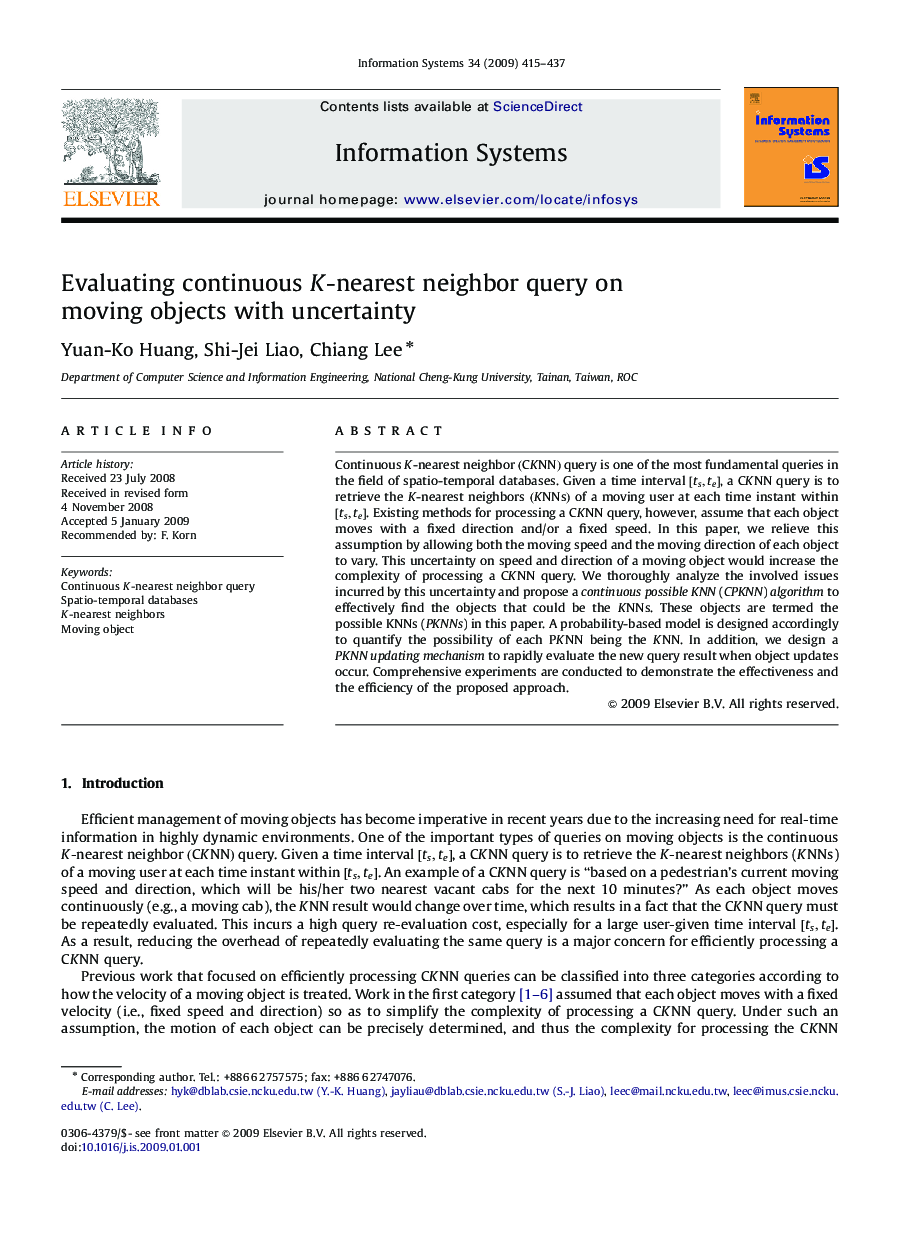| Article ID | Journal | Published Year | Pages | File Type |
|---|---|---|---|---|
| 396760 | Information Systems | 2009 | 23 Pages |
Continuous KK-nearest neighbor (CKNN)(CKNN) query is one of the most fundamental queries in the field of spatio-temporal databases. Given a time interval [ts,te][ts,te], a CKNNCKNN query is to retrieve the KK-nearest neighbors (KNNs)(KNNs) of a moving user at each time instant within [ts,te][ts,te]. Existing methods for processing a CKNNCKNN query, however, assume that each object moves with a fixed direction and/or a fixed speed. In this paper, we relieve this assumption by allowing both the moving speed and the moving direction of each object to vary. This uncertainty on speed and direction of a moving object would increase the complexity of processing a CKNNCKNN query. We thoroughly analyze the involved issues incurred by this uncertainty and propose a continuous possible KNN (CPKNN) algorithm to effectively find the objects that could be the KNNsKNNs. These objects are termed the possible KNNs (PKNNsPKNNs) in this paper. A probability-based model is designed accordingly to quantify the possibility of each PKNNPKNN being the KNNKNN. In addition, we design a PKNN updating mechanism to rapidly evaluate the new query result when object updates occur. Comprehensive experiments are conducted to demonstrate the effectiveness and the efficiency of the proposed approach.
